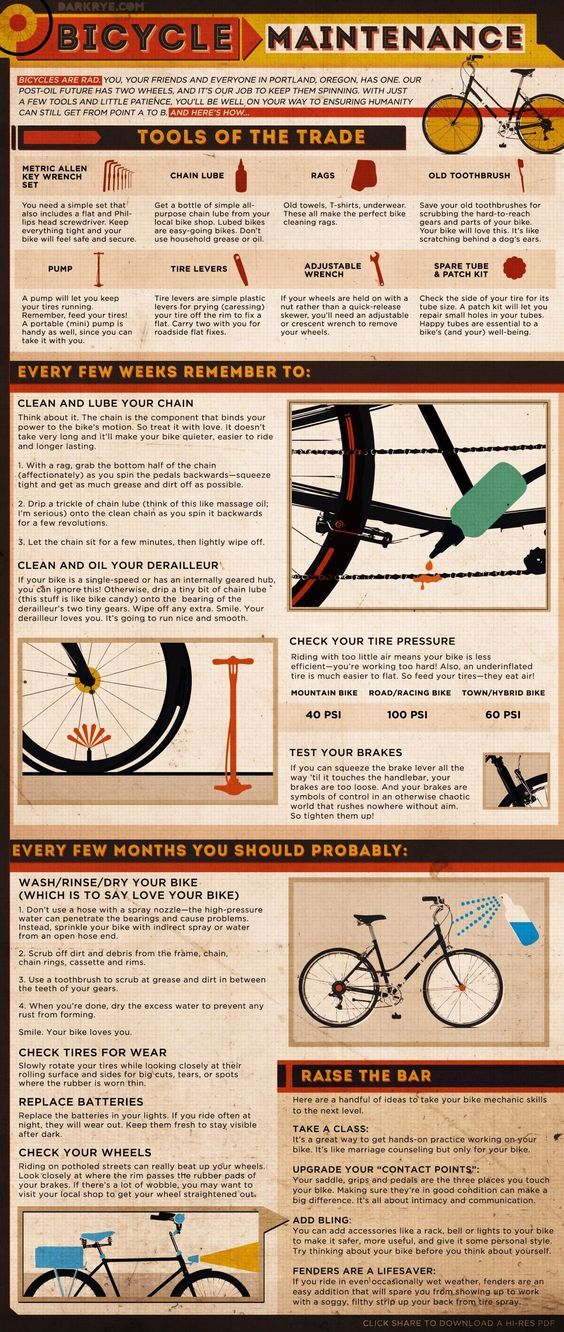I’m not too proud to admit that I’ve had to walk a bike home with a completely preventable flat tire. I’ve learned since then about the importance of checking your tire pressure.
You should pump up your road bike tires at least once or twice a week, or before every ride if you don’t go out that often. Road bike tires have been known to lose pressure after 4-5 days of sitting still. I’ve been surprised with small leaks before, so I check mine before every long ride regardless of when my previous ride was.
Your tires should be somewhere between 80 and 130 psi. Here is a link to my post about how to pick the right tire pressure for you and your ride.
The pressure in your tires will naturally go down over time, whether they have tubes or are tubeless. Neither system is perfect, and they both slowly leak air. This makes sense because road bikes have very high pressures.
The higher the pressure, the more likely that the air will find a way to leak out. As well, road bike tires have a relatively small volume of air in them. So, even if only a little bit of air has leaked out, it means that a larger percentage of the total air is gone.
The temperature can also affect the pressure in your tires. For a given volume of air, the pressure will increase and decrease along with temperature. So, If you filled up to the right pressure in a cool garage, but you are out riding on piping hot pavement, expect the pressure in your tires to go up.
Thankfully, this doesn’t have a huge affect on the pressure. However, there have been occasions where people left their bikes baking in the hot sun, and their tires popped after getting too hot.
Riding your bike with the right tire pressure is very important. While tuning the pressure within a certain range will get you minimal returns, having a pressure outside of that range can actually cause damage. Riding with a low tire doesn’t just slow you down, it also wear out your tube and tire really fast. If your pressure gets low enough, you’re more likely to puncture the tube than you are to enjoy your ride.
Riding with a low tire doesn’t just slow you down, it also wear out your tube and tire really fast. If your pressure gets low enough, you’re more likely to puncture the tube than you are to enjoy your ride.
All of the different problems really just result in an increased amount of maintenance. You’ll need to buy more tubes, buy more tires, install them yourself, or go to a shop and pay someone to install them for you.
Investing in a cheap floor pump and using it regularly can pay for itself. Plus, taking more control over your tire pressure can result in a more enjoyable and safer ride! Click here to read a post about picking a good tire pressure for your road bike.
My suggestion is that you have a floor pump and you pump up your tires before every ride. Here is a link to check the price on Amazon. Make sure that you pick one with a pressure gauge. Getting it to the right pressure should be straight forward as long as you are paying attention.
Just remember that you can pop a tire by pressurizing it too much. There are ways to check your pressure without pumping, though.
Compressing the tire, either by pressing hard with a finger or by sitting on the bike, is a fast and free way to check your pressure. It should compress very little under your finger, and a bit more when you sit on it. Not very much, but definitely some.
he ideal amount of “squish” derived by cycling scientists is 15% of the thickness of the tire. That’s hard to eyeball, though. As long as it gives a little bit, but not more than a few millimeters, then you should be okay.
The more official way to check the pressure without using a pump is to get an actual tire pressure gauge. Here’s a link to Amazon to see a few. You just press it onto the valve, and it will show you the pressure while not letting out much air. This is also much faster than setting up an entire pump.
I have a really easy digital one for my car, but I felt like getting one for my bike was more effort than it was worth based on how I get ready for rides.
It just comes down to what your pre- and post-ride rituals look like, and how often you are actually checking the tires. I’d definitely have a gauge if I was checking tire pressures for more than a couple of bikes at once. That is way better than spending the time dealing with passing around one bike pump.
There are also miniature pumps that attach to your bike frame that you can use in if need to replace or inflate your tire while you are out on a ride. If you want one, this one on Amazon comes with a gauge and It has a ton of good reviews. So, I’m confident it’s actually useful and a good deal.
Going online, most people suggest checking your pressure before every ride. I agree. I’ve made it a part of my pre-ride ritual. Sure, it’ll add a minute or two depending on certain things, but it isn’t much. Besides, it can keep me from getting stranded 20 miles from home.
If checking before every ride isn’t your style, I’ve also seen it be suggested that you check one or two times a week.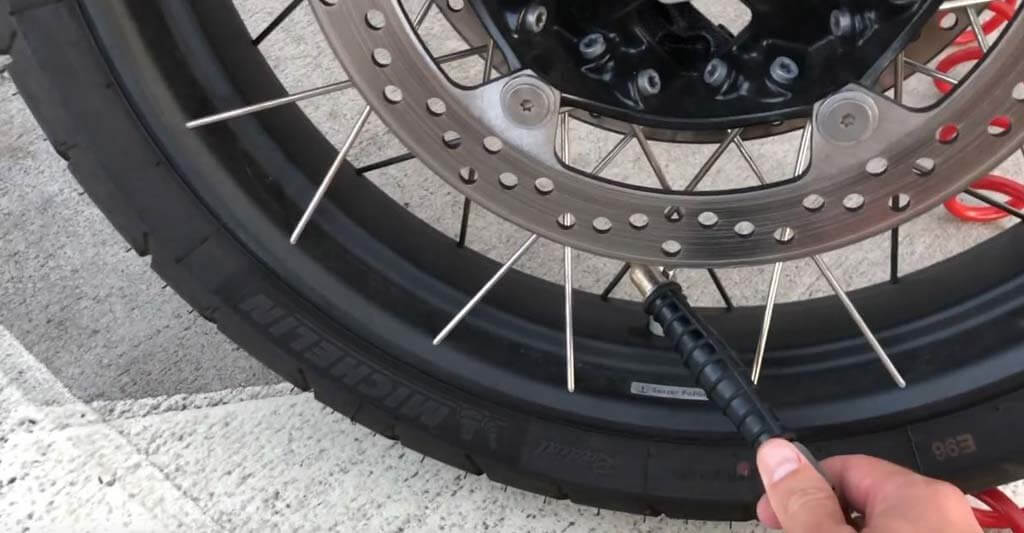 If you aren’t riding far, and you know when you last pumped up, you are pretty safe to just hop on your bike and go.
If you aren’t riding far, and you know when you last pumped up, you are pretty safe to just hop on your bike and go.
Taking the time over the weekend to refresh your tire pressure is also much more reasonable when you have to keep your bike in a shared space. I did this in college when I kept mine in the “bike room” and never ran into problems.
Outside of regular maintenance, here’s where I go over a short, non-exhaustive list of occasions when it would be a good idea to check your tire pressure.

I hope that all of this has given you the confidence you needed to get on your bike without worrying about if you should have checked your tire pressure.
I make content that empowers people to enjoy riding their bikes.
Are you interested in learning more about that?
Here are some hand–picked posts that I think you might find helpful.
Riding and Training,Safety
Bike commuting a one-way distance of at most 10 miles is perfectly respectable. Much more and it can easily become a problem. You’ll need to take more …
Read More
Maintenance
You should always keep your road bike’s tires pressurized to be within the suggested range that is stamped on the side of the tires. Under-inflating …
Under-inflating …
Read More
If you’re a frequent road bike rider, a good general rule is that you should pump your tires at least once or twice a week. But if you don’t go out that often, before every ride is probably a good idea. Road bike tires will lose pressure relatively quickly (even after just four or five days of sitting), so it’s a good idea to check your bike tire pressure in Boca Raton, FL frequently and make the adjustments as needed. In most cases, road bike tires should fall somewhere between 80 and 130 psi.
But why is it that bike tire pressure can change so quickly? It doesn’t matter what kind of bike tire you have (tubed or tubeless)—the pressure will go down naturally over time, even if there’s not an air leak somewhere in the rubber. The higher the pressure, the more likely the air will force itself out. When you consider that road bike tires have a relatively low volume of air, even small amounts of air leaving the tire will result in a fairly sizable percentage of the total air leaving.
When you consider that road bike tires have a relatively low volume of air, even small amounts of air leaving the tire will result in a fairly sizable percentage of the total air leaving.
Temperature affects tire pressure in bikes just as it does in cars. Tire pressure will always increase and decrease with the outdoor temperature. If you fill up your tires in a cool garage but are out riding on hot pavement, the pressure of the tires will go up on your ride. While this increase won’t be extremely large, it’s still something you’re going to want to take into account when filling up your tires before a ride.
It’s important that you have your tires set to the right pressure when riding your bike. Riding with a tire pressure outside the recommended range can cause damage to those tires. If your tire pressure gets low enough, it becomes more likely you’ll puncture the tube inside of it.
You don’t need a fancy bike pump—a cheap floor pump will do. Remember, though, that when pumping up your tires, you can pop the tire by over-pressurizing it. You don’t have to use a pump to check your tire—you can compress the tire by pressing down hard on it with your finger or by sitting on the bike. You shouldn’t be able to compress it very much with your finger, and when you sit on the bike, there shouldn’t be an extremely noticeable compression of the tire.
You don’t have to use a pump to check your tire—you can compress the tire by pressing down hard on it with your finger or by sitting on the bike. You shouldn’t be able to compress it very much with your finger, and when you sit on the bike, there shouldn’t be an extremely noticeable compression of the tire.
You can also use an actual tire pressure gauge, which you can find cheap at bike repair shops or online. Press the gauge into the valve and you’ll get a pressure reading. This is faster than having to pull out the whole pump. You can find both digital and analog pressure gauges.
These are just a few issues you’ll need to take into consideration as a road bike owner. It’s crucial that you do what you can to maintain your tires and the proper bike tire pressure in Boca Raton, FL. For more information, contact the team at Bicycle Doctor House Calls.
Categorised in: Bicycle Maintenance
This post was written by Writer
When buying a bicycle for themselves, many do not even think about the fact that the convenience and comfort when riding it is achieved by properly selected tire pressure. The service life of the bicycle, the speed of riding, the degree of tire wear, safety, control of the two-wheeled friend depends on how the wheels are inflated.
The service life of the bicycle, the speed of riding, the degree of tire wear, safety, control of the two-wheeled friend depends on how the wheels are inflated.
Many cyclists believe that inflating the tires is only necessary for a good bike ride. However, flat tires have a wider area of contact with the road, which means that grip will be better, but it will be very difficult to accelerate to a speed of 30-35 km / h on such tires.
When inflating your tires, you should always consider the type of terrain or surface you will be driving on. If the walk is supposed to be on an asphalt road, the tire pressure of the bicycle should be close to the maximum allowable value. Elastic wheels on a flat surface will provide a smooth rolling and high speed of movement.
For cross-country riding with unpaved paths, it is better to set the tire pressure to medium tolerable, so that you can ride long distances in comfort and convenience. At high pressure, the grip of the wheel with the road will be minimal, respectively, all holes, pebbles, and bumps on the road will be sensitive. And with flat tires, the likelihood of damage to the wheel or puncture of the chamber increases.
At high pressure, the grip of the wheel with the road will be minimal, respectively, all holes, pebbles, and bumps on the road will be sensitive. And with flat tires, the likelihood of damage to the wheel or puncture of the chamber increases.
In order to protect yourself on the road, as well as to keep the bike or its individual parts intact, you need to know exactly the lower and upper limits of permissible values, to what pressure the bicycle wheels can be pumped.
Information about tire pressure gives you an advantage when cycling:
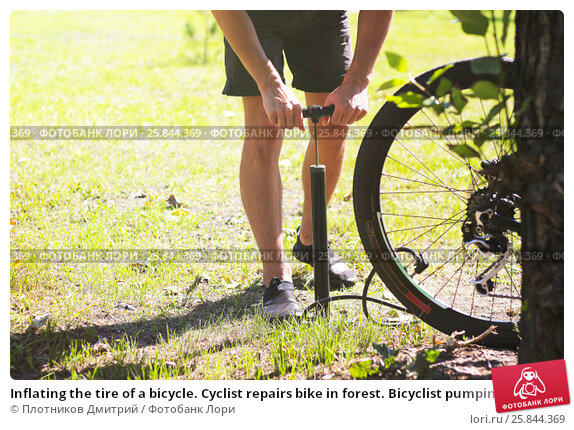
Forget the old "grandfather" way to check the wheel with finger pressure. No need to rely on tactile sensations, trying to feel with your hand the degree of rubber penetration on the tire. The air leaves the wheel gradually, through the pores in the rubber. Within 2-3 weeks, the pressure decreases by 0.1-0.2 atmospheres, but you cannot determine this with your fingers. The exact value at any time will help determine the pressure gauge that every cyclist should have in his arsenal. With its help, it is simple, with a minimum error, the level of pressure in bicycle tires is measured. A pump with a pressure gauge (floor or manual) will become an indispensable tool for cyclists.
There are three standard values in which bicycle tire pressure is measured.
kPa = 14.504 PSI
All these units are used to some extent - in different countries, by different manufacturers. For residents of Russia and the post-Soviet space, the change in bars is more familiar, since this unit is clearly associated with the pressure of the 1st Earth's atmosphere at ocean level. In America and Western Europe, a popular unit is PSI, as they actively use pounds and inches in measurements. Pascals are the least used unit of measurement, but the most modern. Some bicycle manufacturers write data on the wheels about the allowable pressures in all three systems.
For residents of Russia and the post-Soviet space, the change in bars is more familiar, since this unit is clearly associated with the pressure of the 1st Earth's atmosphere at ocean level. In America and Western Europe, a popular unit is PSI, as they actively use pounds and inches in measurements. Pascals are the least used unit of measurement, but the most modern. Some bicycle manufacturers write data on the wheels about the allowable pressures in all three systems.
Manufacturers indicate on the sidewall of the tire how many atmospheres to pump the bicycle wheels. Specifies the range within which the owner of the "iron horse" determines the desired values, depending on the specific factors of riding his bike. Values in the range are labeled from min to max, in two or all three dimensions. Numbers up to 10 are atmospheres (or BAR), tens-hundreds are PSI, and six-digit values \u200b\u200band with the prefix “k” / kilo are Pascals.
When inflating a tire, you must strictly follow the manufacturer's recommendations and try not to go beyond both the minimum and maximum pressure levels indicated on the tire.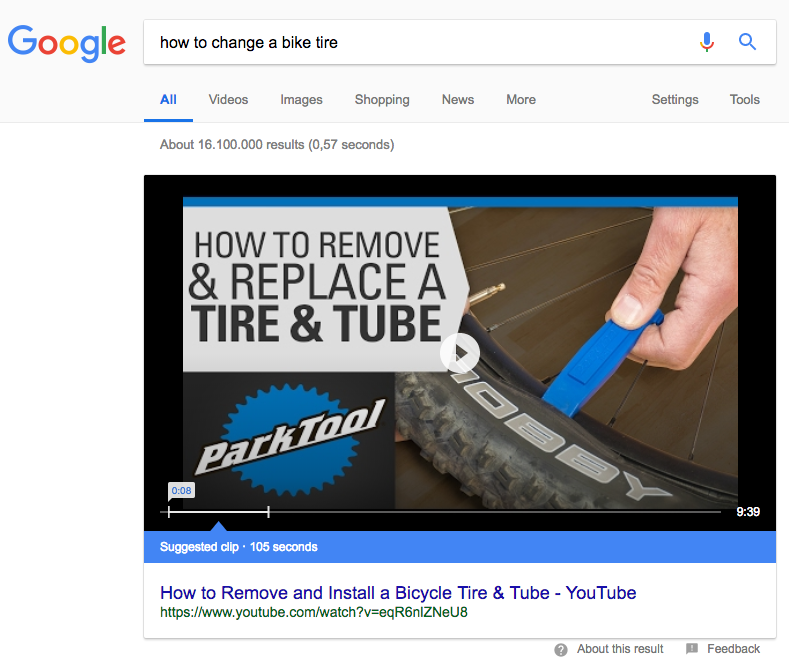 Moreover, it is better to leave a small margin of 0.2-0.5 BAR, both in one direction and in the other, so that the tire does not burst.
Moreover, it is better to leave a small margin of 0.2-0.5 BAR, both in one direction and in the other, so that the tire does not burst.
The pressure in the wheel is kept by the tire, not the tube, so there is no single standard for its value. There are several significant factors that determine how much you need to pump the wheels on a bicycle.
Tire type is determined by the surface of the track that the cyclist will predominantly ride on. Accordingly, the level of inflation of the bicycle wheel will be different. There is a direct dependence on the roughness of the tread and the width of the wheel - the more lugs and the wider the wheel, the lower the pressure should be. Empirically, cyclists quickly determine how many atmospheres should be in the tires of their bicycle
Many cyclists do not think about the fact that air temperature affects the pressure level in bicycle tires. From the course of school physics, we recall that when heated, bodies expand. This means that in hot sunny weather, the pressure inside the air chamber will increase without additional pumping. Conversely, on cold winter days, a decrease in tire pressure is quickly felt due to low temperatures. So, when going for a bike ride in the cold season, the pressure indicators need to be adjusted a little higher than usual, and in the summer heat, let the air out a little. It is worth noting that when going on a bike ride, you should always take into account the weather conditions.
From the course of school physics, we recall that when heated, bodies expand. This means that in hot sunny weather, the pressure inside the air chamber will increase without additional pumping. Conversely, on cold winter days, a decrease in tire pressure is quickly felt due to low temperatures. So, when going for a bike ride in the cold season, the pressure indicators need to be adjusted a little higher than usual, and in the summer heat, let the air out a little. It is worth noting that when going on a bike ride, you should always take into account the weather conditions.
It is important to consider the load on the bike created by the weight of the rider, especially the fact that most of it is on the rear wheel. Therefore, the degree of its pumping should be slightly higher than the front, the optimal difference is 10%.
To calculate the optimal tire pressure for a bicycle, given the weight of its rider, you can use the table:
Rider weight (kg) Pressure (atmosphere) Pressure (PSI)
The nature, riding style and type of bicycle also affect tire pressure.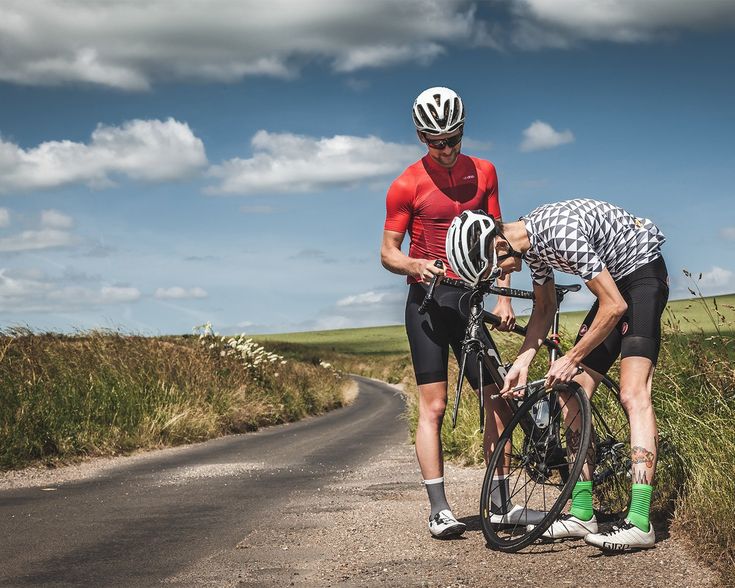 Buyers who prefer an active pastime often opt for mountain bikes with 26-inch wheels, which ride well both on city streets and in rough terrain.
Buyers who prefer an active pastime often opt for mountain bikes with 26-inch wheels, which ride well both on city streets and in rough terrain.
To understand to what pressure to inflate the wheels of a bicycle, it is necessary to take into account the features of both the bike itself and other, at first glance, weightless factors. For example, weaving threads on a tire, rim thickness, driving style. The likelihood of a tire coming off a wide rim is much less than a narrow rim, because a wider rim will hold the tire better than a thin one. Mountain biking already by its name suggests the presence of a difficult surface on the track, with possible obstacles and bumps. The driving style is more aggressive than on a smooth, calm trajectory, it obliges you to increase the tire pressure to a level slightly less than the upper limit.
The diameter of the wheel will also affect the selection of the optimal pressure value, since the larger it is, the higher the volume of air pumped will be.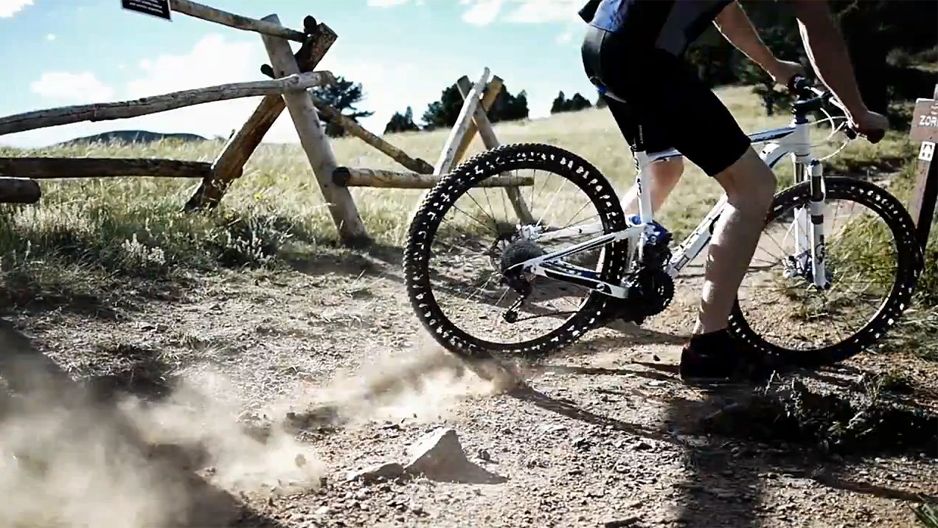 However, for mountain bikes it is not so important whether the wheel diameter is 26 or 29 inches, it is much more necessary to pay attention to the parameters of the rider's weight and the type of track.
However, for mountain bikes it is not so important whether the wheel diameter is 26 or 29 inches, it is much more necessary to pay attention to the parameters of the rider's weight and the type of track.
There are no hard and fast rules about how much you need to inflate the wheels on your bike. There is common sense, experience, practice. Manufacturers can recommend certain values, but only the owner himself will determine exactly which road he will ride, in what weather conditions he will drive, take into account his weight parameters or not. The decision, what pressure in the wheels will be ideal, is sure to be found.
Edited: 01/25/2018
You came in the morning to your iron horse and you see - the wheel has flattened. How to download it? Correct pump. And how to pump up correctly ? How many atmospheres Do beginners often think about it.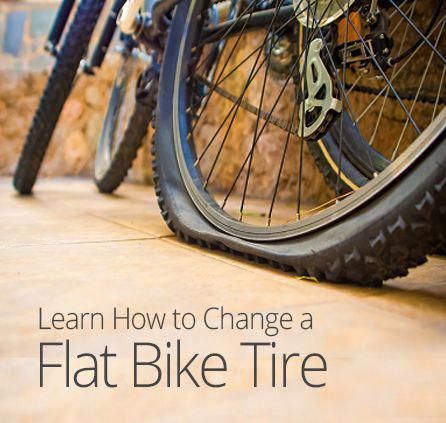 Previously, as they did. I pumped up the wheel, tried it with my fingers - it is pressed through or not. He sat down and looked at the wheels - sold through or not. Sold - pumped up, not sold - went. It was called - to check "for a bulging naval eye."
Previously, as they did. I pumped up the wheel, tried it with my fingers - it is pressed through or not. He sat down and looked at the wheels - sold through or not. Sold - pumped up, not sold - went. It was called - to check "for a bulging naval eye."
It turns out that not everything is so simple.
With a properly inflated tire, the ride is pleasant and easy. It provides good rolling, speed, tire wear resistance and, in the end, the safety of the cyclist.
You need to understand that pressure is not kept by the chamber, but by the tire.
The pressure for which the tire is designed is indicated by the manufacturer directly on it.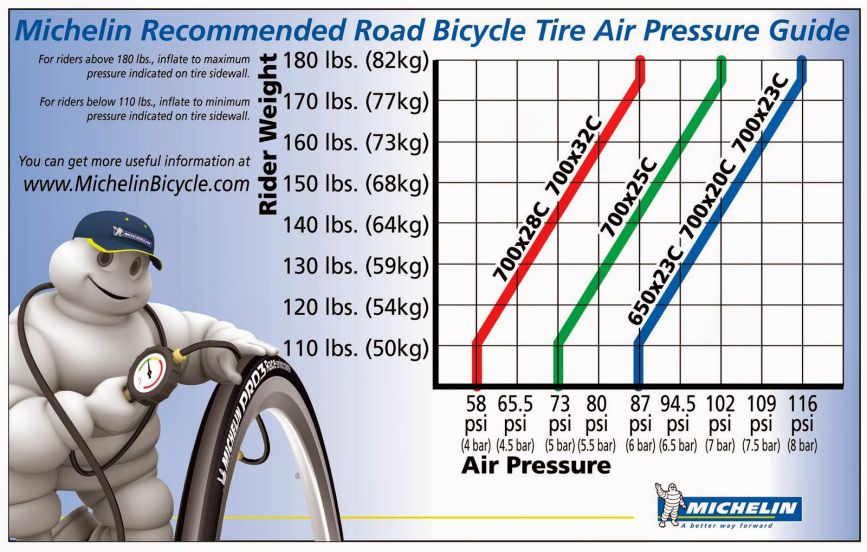
The inscription in English " Inflate to ... " literally translates as "Inflate to ..." ("Inflate to", "Pressure from ... to ...").
For example, the figure indicates that the pressure should be from 36 to 60 PSI (from 250 to 420 kPa) or from 2.5 atmospheres to 4.2 atmospheres, respectively.
 Used in Europe and some US states. Designated as PSI or LBS/IN 2 . For the given example, these are 36 and 60, respectively.
Used in Europe and some US states. Designated as PSI or LBS/IN 2 . For the given example, these are 36 and 60, respectively.
The relation between BAR, PSI and Pa is: , but with the translation of Bar to PSI, everything is a little more complicated, so here is table for quickly converting pressure in bicycle tires from Bar to PSI and vice versa :
Let's mention another pressure designation, which is called "kilogram force per square centimeter" or "technical atmosphere" and is denoted as " kgf / cm² " or " kgf/cm² ". It is quite rare, but it does happen. We will dwell on the technical nuances, there are a lot of articles on this topic on the Internet, let's just say that for bicycle pressure it can be considered equal to 1 Bar or one atmosphere.
And for lovers of exact mathematics, here are the conversion factors:
1 kgf / cm² = 1 atmosphere = 0.98 Bar = 98.07 kPa = 14. 22 PSI
22 PSI
When inflating a tire, you need to clearly understand that the pressure in it should not be lower than the minimum specified and higher maximum. It is worth noting here that it is better to leave a small margin of 0.2-0.5 atmospheres without inflating the tire to the maximum value so that it does not burst, especially in hot weather.
About what else the manufacturer writes on bicycle tires, as well as what other numbers mean on it, there is a separate article on our website, which is called "What do the numbers on bicycle tires mean".
To be honest, without a pressure gauge, nothing. So you need a bicycle pump with a pressure gauge, a separate pressure gauge connected to the nipple, or you will have to inflate tires at a service station - they always have something to measure the pressure in the wheels. You have to be careful with STO. There are times when a valiant worker, forgetting about pressure, hits the wheel with everything he can and the camera, together with the tire, explodes in a matter of seconds.
There is one piece of advice. When you know exactly what pressure is now - try to squeeze the tire with your fingers. So gradually you will learn to determine the approximate pressure in the chamber by tactile sensations. Remember that already from two bars (atmospheres) the tire feels rather tight to the touch.
If the pressure is low, the tire can easily puncture. In addition, under-inflated wheels extinguish a large percentage of the cyclist's efforts to accelerate and actually ride. The tire "spreads out" on the asphalt and, moreover, wears out very quickly from high friction on it.
This also leads to the so-called "snake bites" - two adjacent breakdowns. Occurs when a sharp collision with a curb, stone or bump. In this case, the tire is pressed against the rim, the chamber is clamped between the rim and the object that the wheel has run into, and breaks through in two places at once.
Riding at low pressure can be dangerous for rims, you can easily get an "eight" on the wheel. At low pressure, frequent punctures are possible, and when cornering, the tire can generally fly off the wheel, which is already life-threatening.
At low pressure, frequent punctures are possible, and when cornering, the tire can generally fly off the wheel, which is already life-threatening.
In this case, if the wheel is heavily pumped, it can easily pierce the rim (on the side of the spokes). To protect the camera from this, a special rim tape is used. This is a rubber or polymer strip that fits over the rim to keep the ends of the spokes and the sharp edges of the spoke holes from piercing the tube. So a middle ground is needed. An example of such a tape is shown in the figure on the right.
It is generally recommended to check the pressure before each ride (at least by feel). Remember that it is not only the nipple that poisons. The air is also slightly etched through the rubber itself, albeit slowly. Because of this, every month, an inflated tire itself loses an average of one bar of pressure.
I would like to note one more thing. When driving, the main load falls on the rear wheel, while the front is not so heavily loaded.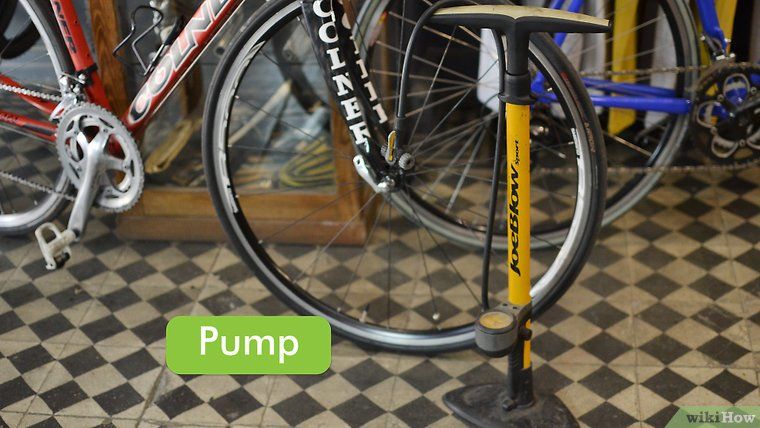 Based on this, it is possible to do pressure in the rear tire a little more than in the front . On average, somewhere around 10%.
Based on this, it is possible to do pressure in the rear tire a little more than in the front . On average, somewhere around 10%.
For driving on asphalt and well-packed dirt roads, you need to pump up the maximum pressure.
Inflating wheels for road and city bikes - slicks is the easiest. Due to the fact that they have a small volume of wheels, the pressure must be high. The more pressure, the better the roll and the higher the speed. So feel free to pump a little bit by 0.2 - 0.4 without pumping up to the maximum pressure indicated by the manufacturer on the tire, especially in hot weather.
For semi-slicks, it is important to choose the right pressure for the exact surface on which the bike rides.
Driving on hard surfaces - asphalt and packed primer. At low pressure, all the advantages of these tires are lost. A properly inflated semi slick should roll on a hard surface with the smooth part of the tread. And on soft ground, the side lugs come into play. At low pressure, the tire will flatten and cling to a hard surface with its side lugs, creating additional resistance and wearing out faster.
When driving on soft ground, it is better to reduce the pressure. The low pressure absorbs bumps in the road and makes off-road driving more comfortable. At the same time, the area of contact between the wheel and the road increases, which, accordingly, leads to an improvement in grip. This is especially felt on the descents and sharp turns.
When riding on sand or snow, it is better to increase the pressure - better grip and better handling of the bike.
All toothy tires designed for travel on soft ground, sand, snow are best used with high pressure. In this case, the adhesion will be maximum.

If the temperature is high, it is better to reduce the pressure a little. Be aware that the wheel may overheat. The hot asphalt itself and the friction of the tires on it heat the chamber and the air inside it, which accordingly increases the pressure. So a tire inflated to its maximum value in a hot summer can suddenly explode.
More details on the effect of air temperature on tire pressure are described in a separate article "Tyre pressure versus temperature". There are also calculation formulas.
Here, for example, we give a table for determining the pressure in the bicycle wheel from the air temperature, if it is inflated at a temperature of +20°C.
At low temperatures and in winter, things are a little more complicated.
When riding on loose snow, keep the pressure at or slightly below the average value indicated on the tire. If the bike has a tread with large spikes, then it is better to increase the pressure almost to the maximum when there is not much snow on the road and it is not wet - then the rubber will give maximum grip. The spikes will "bite" into the surface.
In other cases, it is better to keep the pressure low - the tire will "spread out" on the road surface and have better grip.
Precise recommendations for winter skiing are not easy to give. A lot depends on the type of tread, road condition, actual air temperature (-20, 0 and +5 are different things), snow moisture, weight and experience of the cyclist. In addition, winter roads do not always have one type of coverage, especially in the city. In some places, the road has been cleared to asphalt, in others there is a dense crust of compacted snow and ice, ice, and in some areas there is just an ordinary snow cover of 10-20 centimeters.
The answer to the question "How much pressure to keep in the tires in winter" will come to you gradually, with the experience of travel.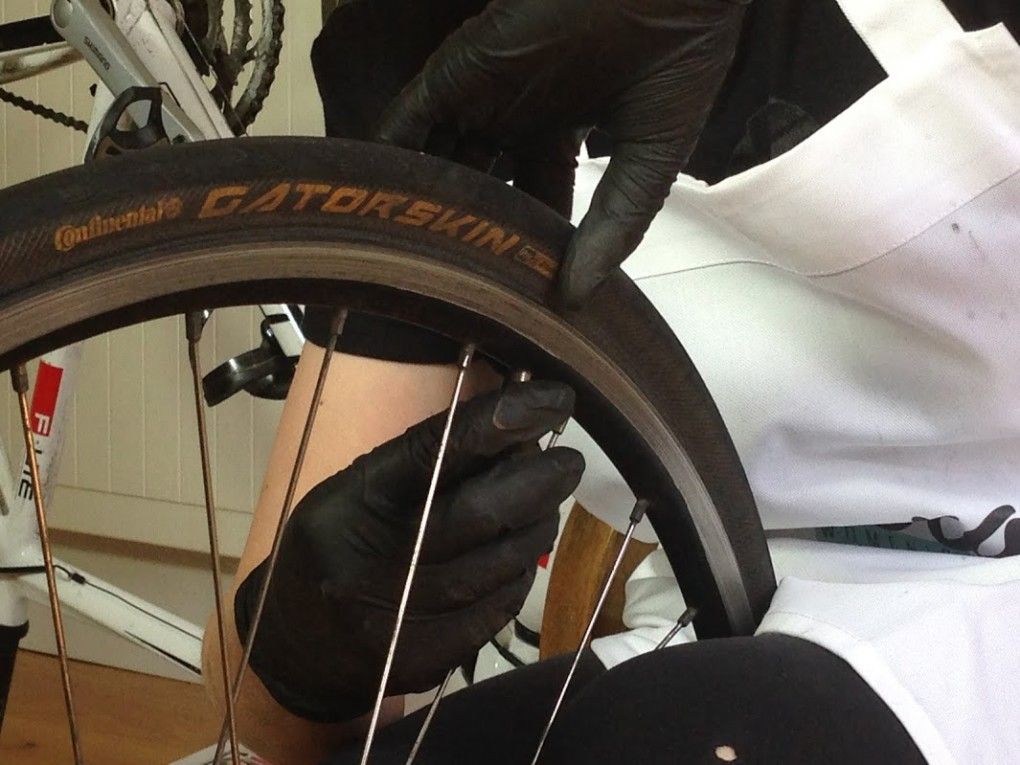 And it will not necessarily be exactly the same as that of cyclists in the north or south of the country. Indeed, in the north, the temperature rarely rises above -5, and in the south it jumps from minus to plus. And it happens that in the morning -10, and in the afternoon zero or even positive temperature, and the pressure in the wheel has already changed, and the snow on the road is not the same as in the morning. It is best to have a small pump and pressure gauge with you at all times.
And it will not necessarily be exactly the same as that of cyclists in the north or south of the country. Indeed, in the north, the temperature rarely rises above -5, and in the south it jumps from minus to plus. And it happens that in the morning -10, and in the afternoon zero or even positive temperature, and the pressure in the wheel has already changed, and the snow on the road is not the same as in the morning. It is best to have a small pump and pressure gauge with you at all times.
Often on Internet forums, cyclists argue about how much pressure to keep in the tires in winter, but in their assessments they do not always mention the specific nuances indicated above, which confuses beginners.
Another small nuance for the cold season. If the wheels rock in a warm room (at home, in a garage), then do not forget that outside, where the temperature is lower, the pressure will drop a little. How much it will fall depends on the specific temperature and can be seen in the table above.
This needs to be clarified right away. The tire pressure of the road bike always varies between 6.5-9 BAR (up to 130 PSI) and does not depend very much on the weight of the cyclist.
The pressure in mountain bikes is always lower.
Here is a table showing the pressure in the tires of a mountain bike and a city bike as a function of the biker's weight:
You can focus on the following - for each additional kilogram of weight, the pressure should be increased by 1%.
Tire pressure directly affects tire life. Riding on poorly inflated tires wears them out quickly.
First of all, you need to look at the limits that are written on the tire and certainly the pressure should not be less than the minimum indicated. Further, the bulk of children weigh up to 50 kg.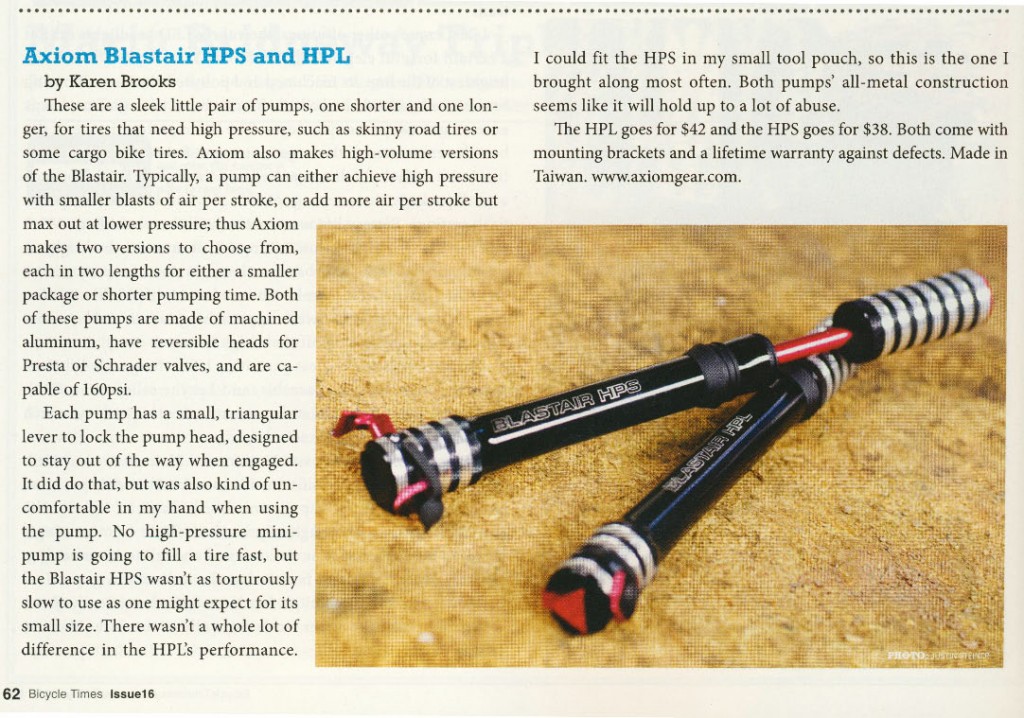 , Therefore, for them, the pressure in the wheels of children's bicycles must be maintained at a level of approximately 2 - 2.5 atmospheres. To the touch, this is a rather tight wheel and it is rather problematic for an ordinary person to squeeze it with their fingers. It is not worth pumping children's wheels, otherwise the ride will be very tough.
, Therefore, for them, the pressure in the wheels of children's bicycles must be maintained at a level of approximately 2 - 2.5 atmospheres. To the touch, this is a rather tight wheel and it is rather problematic for an ordinary person to squeeze it with their fingers. It is not worth pumping children's wheels, otherwise the ride will be very tough.
If your child weighs more than 50 kg, the tire pressure must be taken from the table above.
When riding a mountain bike in the city and on a rolled primer, this is 3-3.5 atmospheres. For movement on the ground - 2.5-3 atmospheres
At the same time, if your weight is more than 80-100 kg, feel free to add another 0.5 atmospheres to the wheels (be careful not to go beyond the maximum pressure).
If you have a road bike - feel free to inflate 3.5-4 atmospheres, looking at the limit values indicated on the tire.
The general principle is: The narrower the tire width, the higher the tire pressure .